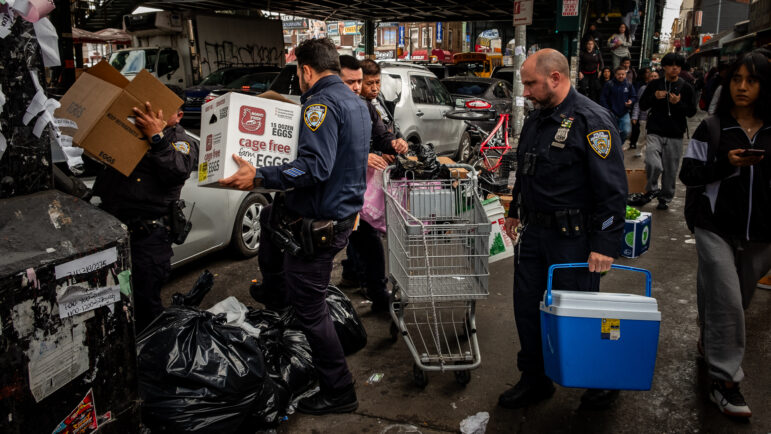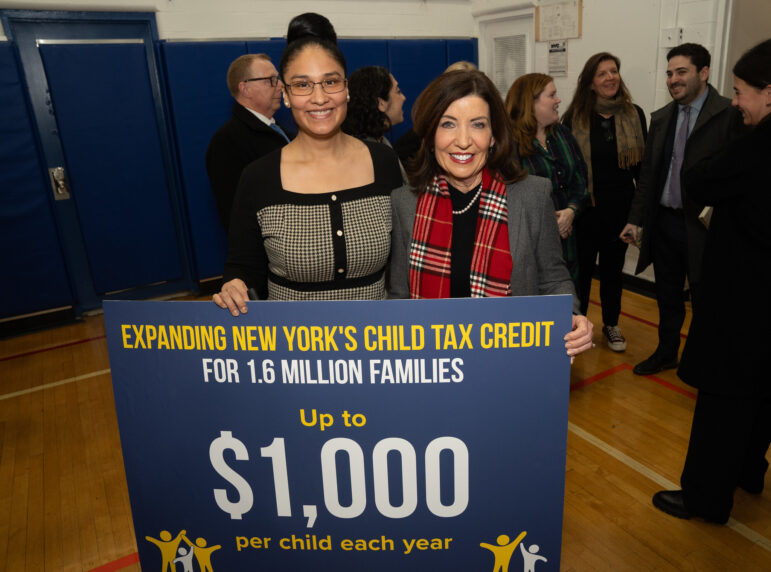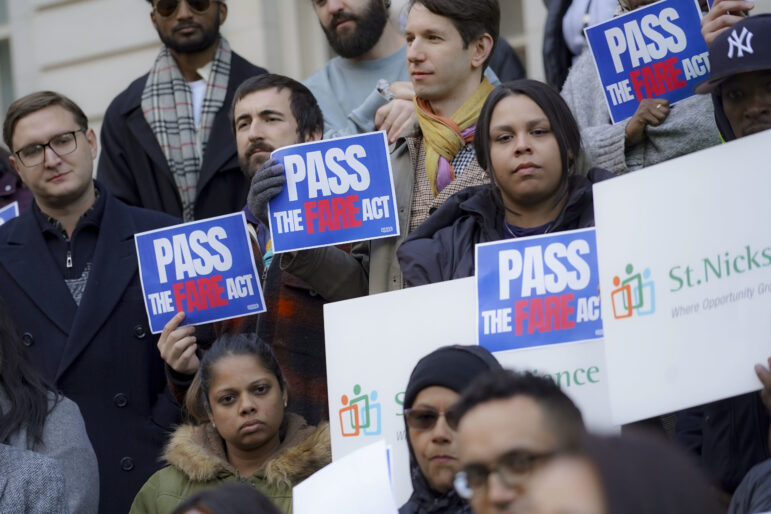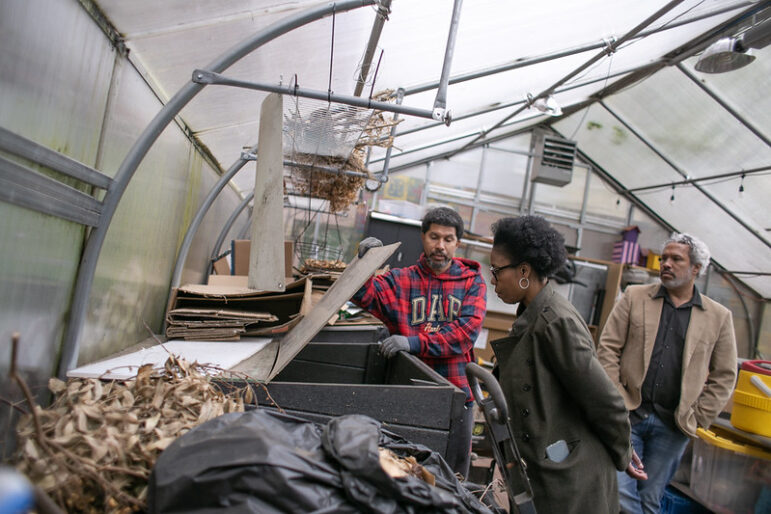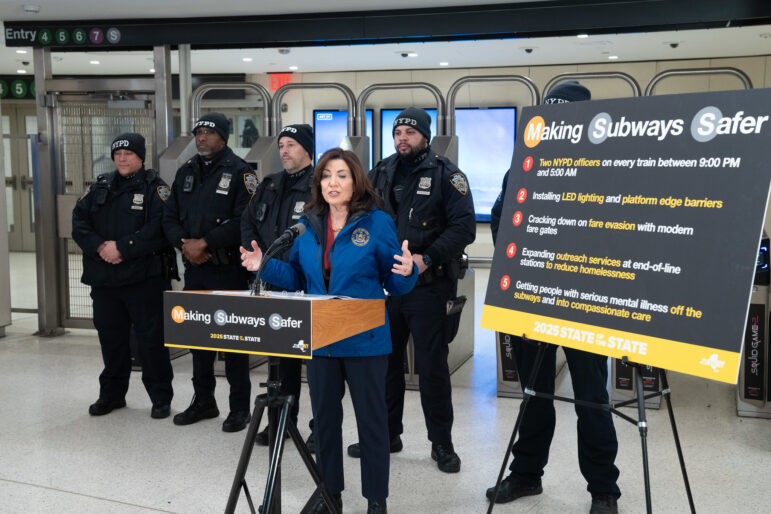“It’s easy to cast all opposition to developments as NIMBY, but this ignores crucial racial and economic differences between neighborhoods and disparities in who has the power to decide the future of their communities.”
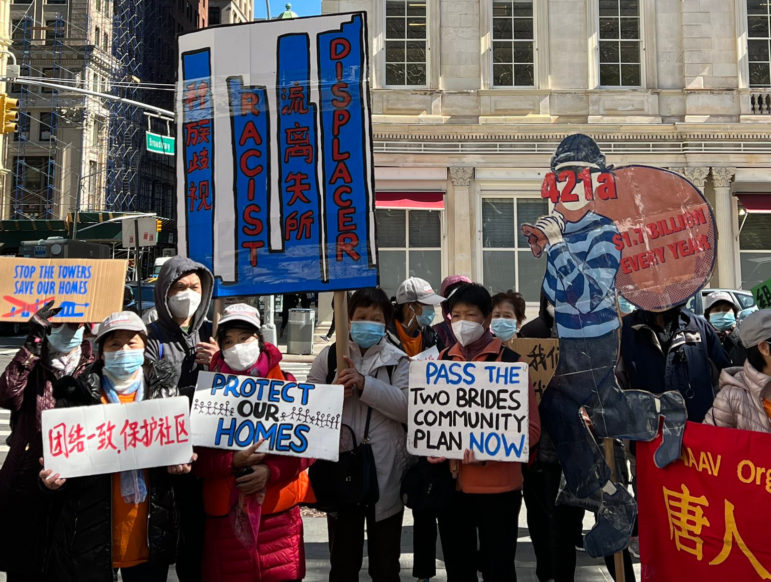
Courtesy CAAAV: Organizing Asian Communities
Residents and activists rallied in favor of the community plan and against The Chetrit Group Project at an event Monday.Who gets to decide the future of a neighborhood? This is a question communities are asking across the city and one at the heart of a rally held Monday morning by Chinatown and Two Bridges residents and organizations as they seek to stop a luxury development that runs directly counter to their long-standing community plan.
The development—two soaring towers on a single base at 265 Cherry St.—is one of four proposed for the area, bringing a total of five new luxury super-tall towers to what has historically been a neighborhood of planned affordable housing. In fact, the towers are only possible because the de Blasio administration allowed changes to the zoning and development plan that guides this neighborhood—changes that they deemed would not have to go through ULURP, the city’s public review process, even as developers acknowledged that these towers would be impossible without them.
Following that approval and these concessions, the owner of 265 Cherry St. promptly sold the property to The Chetrit Group. Chetrit is now looking to rush construction, seeking approval from the Department of Buildings (DOB) to begin foundation excavation before plans for the new building have been approved; they admit this is wholly self-serving: they are hoping to ensure that they can qualify for the 421a tax break before it might expire, allowing the property to be tax-free for 25 years.
In seeking this, they’ve promised the DOB that if the building isn’t constructed, they will fill the foundation back in. That’s right, they’re seeking permission to dig a giant hole that they’re not certain will even be used—something especially galling given this is a toxic site with a required remediation plan as part of any new development.
This is all the more egregious because the community has had a plan for years for what they would like to see here. The Two Bridges Community Plan seeks to “promote mixed-use development that produces new affordable housing,” but to do so in a fashion that serves this historically diverse, low- and moderate-income community. The plan involves imposing height limits of 350 feet, requiring 50 percent affordable housing at income levels that match the neighborhood, and limiting certain uses like hotels, big-box stores and nightclubs. The four proposed towers, including Chetrit’s, directly contradict this vision—with heights from over 600 to 1,000 feet and 25 percent “affordable” housing targeted to earners making much more than area residents.
The Two Bridges Community Plan is itself one portion of the larger (CWG) and is the first step towards getting the full CWG Plan enacted. The CWG Plan came out of a five-year community planning process and includes a host of recommendations on affordable housing, economic development, and cultural and historic preservation as well as detailed zoning proposals for different subdistricts of the neighborhoods, including Two Bridges.
The urgency of the threats these developments pose to the Two Bridges neighborhood has long meant that there isn’t time to wait, and in 2017 Community Board 3 and local organizations TUFF-LES, CAAAV and GOLES, submitted a rezoning application to the Department of City Planning to advance the Two Bridges Community Plan. In submitting these applications, these groups claimed a power that is theoretically open to all of us but generally only taken by developers and the city.
Now, after five years of back and forth with the Department of City Planning, and after submitting an Environmental Assessment Statement, the Two Bridges Plan is as close to reaching ULURP as any community plan in recent memory. There’s a real chance to get this plan across before it’s too late.
This makes it all the more imperative that Chetrit’s development not be allowed to skirt the rules and move forward on a faster timeline. Any future developments in this neighborhood must match the neighborhood plan. This is what residents are calling for when they say no to these towers.
It’s easy to cast all opposition to developments as NIMBY, but this ignores crucial racial and economic differences between neighborhoods and disparities in who has the power to decide the future of their communities. There’s a fundamental difference between a whiter, wealthier neighborhood saying no to affordable housing where it isn’t being created today and a low-income, BIPOC neighborhood fighting to ensure their community stays affordable for everyone—especially when that community has a powerful vision for how to get there. This is what communities like Two Bridges have long been calling for, across the five boroughs, and it’s imperative that the way we plan as a city puts their needs and plans front and center.
There’s no time to wait. The Two Bridges Community Plan is as close to the finish line as any community plan has been, and getting it enacted would set a powerful example throughout the city, starting first and foremost with the Chinatown Working Group Plan. In this neighborhood at least, the answer to who should decide its future is clear, and it must be respected.
Christopher Walters is the land use policy coordinator at the Association for Neighborhood and Housing Development (ANHD).


